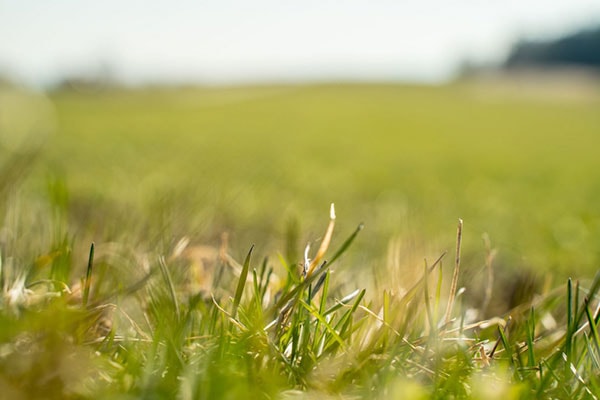In the past, cattle were also kept as working animals, but today their function as dairy and slaughter cattle predominates. However, they are also kept as breeding animals and for landscape conservation purposes.
Below is an overview for the comparison of the most common dairy and meat breeds in Germany:
Table of Contents
| Profile German Holstein Beef: | |
| weight: | 600-700 kg |
| height at withers: | 1.45 – 1.56 |
| milk yield: | 10.000 – 16.000 kg 4% fat 3.5% protein |
| first calving age: | 25 – 28 months |
| fattening: | medium gains |

The Holstein cow originally comes from the back then German black and white Lowland cattle that was exported to the USA. Through inbreeding this breed was bred for milk yield. Later, the German Lowland cattle was almost completely displaced by the Holstein-Friesian through displacement crossbreeding.
In the last decades this breed has developed into the most important dairy breed in Germany and even worldwide and is represented in almost all regions. The Holstein cattle is an economic high-performance cow and the most widespread dairy breed in Germany. Its good economic efficiency is guaranteed here above all by a high feed intake and high milk yield. She has, according to her task, a healthy, well milkable and firmly attached udder.
| Profile Jersey Beef: | |
| weight: | 400 – 500 kg |
| height at withers: | 1.26 – 1.33 m |
| milk yield: | 6400 kg 5.7 % fat 4.3 % protein |
| first calving age: | 24 – 26 months |
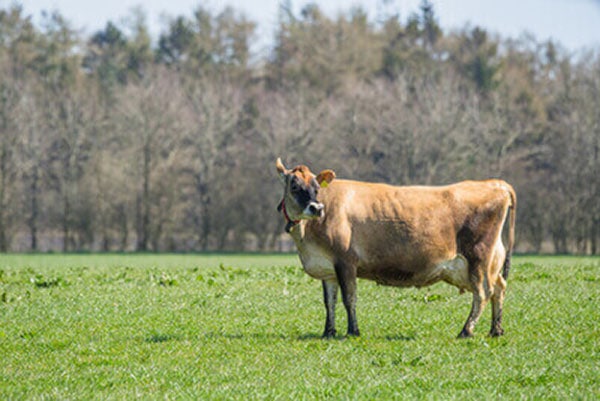
The Jersey cattle is a very good milk supplier compared to its comparatively small body size, whose milk is mostly used for cheese production. Not least because their milk contains extremely high levels of protein and fat. Above all, they are considered to be long-lasting, fertile and adaptable. Irrespective of soil, climate or location, they stand for easy births and high hoof health, thanks to a correct physique.
The country of origin of these cattle is the Island of Jersey, from where the breed has spread throughout the world. Today the most important areas for Jersey breeding are mainly the USA, Denmark, New Zealand, Canada and England.
Worth knowing!
The Jersey cattle has a very high efficiency in feed conversion.
Jersey cattle can convert a wide variety of basic ingredients into high-quality milk and have a pleasant character!
| Profile Angus Beef: | |
| weight: | 550 – 1.200 kg |
| height at withers: | 1.25 – 1.50 m |
| first calving age: | 24 months |
| fattening: | high gains |

The hornless breed originally comes from Scotland. Angus cattle are characterised by their quiet character. Handling is made easier by their good-naturedness and frugality. The cows are precocious, have a high suckling capacity (2,500-3,000 kg milk) and a pronounced motherliness. This is why the breed is often used for suckling cows or dams.
In addition, Angus cattle have an above average feed intake capacity. This means that high market performance is achieved even on poor grazing land and under difficult environmental conditions.
Worth knowing!
The meat of Angus beef is characterised by a pronounced marbling and fine grain. This is why the breed is used to produce high-quality beef.
| Profile Aubrac Beef: | |
| weight: | 550 – -1.100 kg |
| height at withers: | 1.26 – 1.38 m |
| first calving age: | 28 – 34 months |
| fattening: | very good meat quality |

Originally from France, this cattle is a cross between a brown cattle and a Maraichine cattle. This makes it extremely robust, efficient and resistant, which makes it suitable for year-round outdoor keeping. Light calving and good fertility are also appreciated characteristics of Aubrac cattle.
The breed of cattle suitable for suckling cows can be recognised by its plain wheat-yellow or brown-red coat and the whitish border around the eyes. The eyelids and eyelashes themselves are black.
Worth knowing!
To increase the quality of the meat, the Aubrac cow is often crossed with a Charolais bull.
| Profile Charolais Beef: | |
| weight: | 700 – 1.300 kg |
| height at withers: | 1.32 – 1.42 m |
| first calving age: | 29 – 33 months |
| fattening: | very well suited |
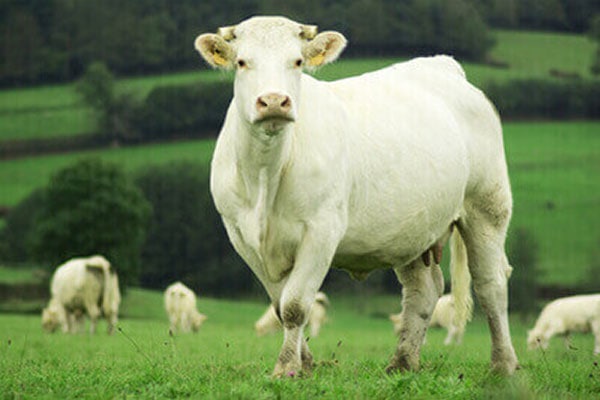
Cattle from eastern France used to be used both as working animals and for meat production. Today they are kept exclusively for meat production. Charolais cattle give just enough milk to feed their calves.
As the name suggests, the cattle come from the Charolles region, the Charolais. They are plain white to cream and have a light floppy mouth, horns and claws.
| Profile Galloway Beef: | |
| weight: | 450 – 800 kg |
| height at withers: | 1.20 – 1.30 m |
| fattening: | medium gains |

The beef cattle breed originally comes from Scotland. Today the hornless breed is spread all over the world.
The animals have a double layered coat. The undercoat is fine and dense and the top coat is long and wavy. This makes Galloways particularly resistant to harsh climates and makes them ideal for landscape maintenance. Furthermore, the animals are long-lived, fertile, easy to calve and frugal. Year-round outdoor keeping is no problem for this breed.
Worth knowing!
Compared to other beef cattle, the Galloway cow is one of the smaller cow breeds. In contrast to them, they have a relatively low maintenance turnover and can also convert nutrient-poor vegetation. The breed is characterised by an excellent meat quality.
| Profile of Hereford Beef | |
| weight: | 650 – 1.350 kg |
| height at withers: | 1.40 – 1.55 m |
| first calving age: | 23 – 27 months |
| fattening: | very good meat quality |

The Herefords can be recognised by their reddish-brown coat, in which the head, legs, neck and tail are always white. They have a medium to large frame as buildings. These cattle are known for their maternal traits and good-natured handling. Free-range keeping throughout the year is also possible with this breed.
Worth knowing!
Hereford beef exist both with and without horns.
| Profile Limousin Beef: | |
| weight: | 650 – 1.400 kg |
| height at withers: | 1.37 – 1.43 m |
| first calving age: | 24 – 26 months |
| fattening: | very well suited |

Originally from France, Limousin cattle are now reared in some 60 countries. In 1975, the breed was also spread throughout Germany and is one of the most important meat breeds there. Their meat is of the best quality and extremely tender. The animals are very weatherproof and adaptable – this makes them hardly sensitive to cold and heat.
Worth knowing!
Limousin cattle are only fully grown after 5 years. They quickly become tame and quickly lose their shyness for various things.
| Profile White-blue Belgians: | |
| weight: | 700 – 1.300 kg |
| height at withers: | 1.32 – 1.50 m |
| milk yield: | only for calves |
| first calving age: | 29 – 30 months often already after 24 months |
| fattening: | very high gains |

The white-blue Belgians are a pure meat-breed, which attracts attention through its appearance. They are strongly muscled and give only little milk, so that it is just enough for their offspring. This cattle breed belongs to the double leather line, which means that a natural mutation in a gene that normally inhibits muscle growth cannot control muscle growth.
The breeding of the double leather line is subject to the ban on torture breeding in Germany, but a ban on pure breeding does not yet exist.
| Profile German Brown Swiss Cattle: | |
| weight: | 550 – 650 kg |
| height at withers: | 1.40 – 1.52 m |
| milk yield: | 7000 – 12.000 kg 4.22% fat 3.7% protein |
| first calving age: | 30 months |
| fattening: |
high gains |

The German Brown Swiss Cattle is divided into Original Brown Cattle and Brown Swiss. Compared to Original Brown Swiss, Brown Swiss in the USA was bred almost exclusively for milk yield. As a result, the Original Brown Swiss was largely displaced by artificial insemination through displacement crossbreeding. The original character of a typical dual-purpose breed was thus shifted in favour of milk yield. In breeding this breed, special emphasis is placed on adaptability, longevity and a healthy foundation.
Worth knowing!
For a better added value, Brown Swiss is partly crossed with white-blue Belgians in order to achieve a higher income for the calves not needed for remounting.
| Profile Spotted Cattle: | |
| weight: | 650 – 800 kg |
| height at withers: | 1.40 – 1.50 m |
| milk yield: | 7.000 – 11.000 kg 4.2% fat 3.5% protein |
| first calving age: | 30 months |
| fattening: | high gains |
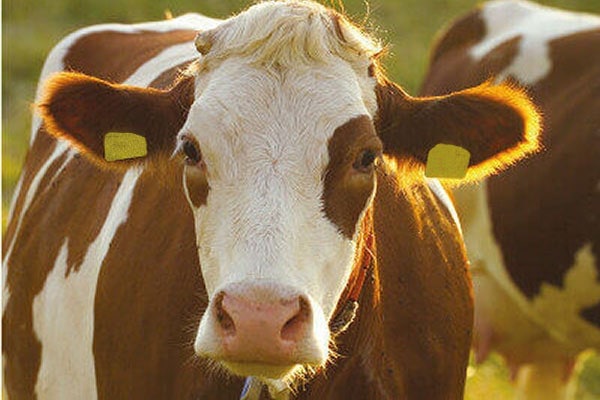
The Simmental cattle originates from the Swiss Simmental. In the past, these cattle were mainly kept on family farms as a triple-purpose breed. They were used for both meat and milk, but they were also used as working and draught animals.
The Simmental cattle is the second largest cattle breed in the world and is used in most areas as a pure meat breed. In Europe, however, dual-purpose is still the main focus.
| Profile Pinzgau Beef: | |
| weight: | 650 – 1.200 kg |
| height at withers: | 1.34 – 1.50 m |
| milk yield: | 6000 kg 4% fat 3.5% protein |
| fattening: | high gains |
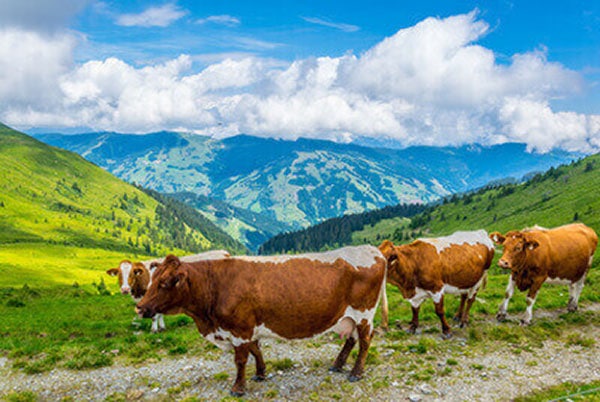
Pinzgauer beef comes from Salzburg, today’s Zell am See district, and was once kept as triple-purpose cattle and today is used exclusively for milk and meat production. Special for this breed is the typical colouring. They are chestnut red and have both on back, belly and thighs a white colouring.
Worth knowing!
Pinzgauer beef is also available as a hornless “variation”. In former times it was considered to be crippled, today it is in great demand and is needed in stable management.
| Profile red mountain cattle: | |
| weight: | 500 – 950 kg |
| height at withers: | 1.30 – 1.40 m |
| milk yield: | 4.000 kg 4.5% fat 3.5% protein |
| first calving age: | 18 months |
| fattening: | very high meat quality |

The red mountain cattle is a cattle breed which has been found from Lower Saxony to Bavaria, as well as in Poland and the Czech Republic. The red mountain cattle was on the verge of extinction, as it was largely replaced by high-performance breeds.
The red mountain cattle can be recognised by its medium-framed and well-muscled physique. They have a light floppy mouth and light horns with dark tips.
The breed is known for its robust, durable and undemanding nature. They are also characterised by easy calving and good mothering qualities.
Worth knowing!
The red mountain cattle is one of the triple-purpose breeds. In addition to meat and milk production, it was also used to make daily work easier.
| Profile Aurochs: | |
| weight: | 700 – 1.000 kg |
| height at withers: | 1.40 – 1.80 m |
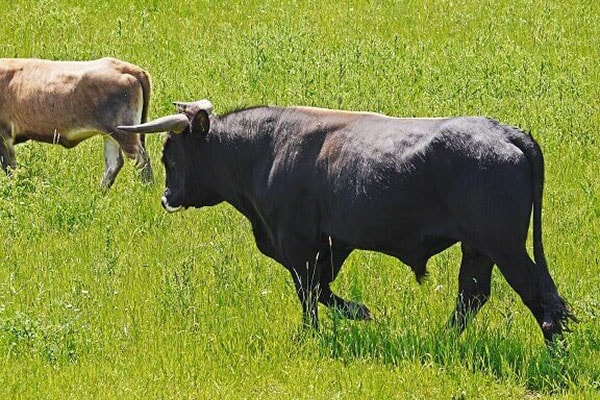
The Aurochs, also called Ur, died out in 1627 due to decreasing land area, hunting and diseases. Originally the breed came from India and then spread to the Near East, Europe and North Africa. The Aurochs is considered the progenitor of the domestic cattle breeds.
The horns were strongly pronounced in this breed. In a bull they could be up to 1m long. In addition, this breed was characterised by a hump on the back and a rather elegant build.
Worth knowing!
The Heck brothers wanted to breed a cattle which looks like an Aurochs on the outside. The Heck cattle is very similar to the Aurochs. But the height at the withers was not reached and also the proportions do not correspond to the Aurochs.
| Profile Dahomey Beef: | |
| weight: | 230 – 300 kg |
| height at withers: | 90 – 100 cm |
| milk yield: | only for calves |
| first calving age: | over 24 months |
| suitability | ladscape conservation |

The Dahomey cattle is the smallest cow breed in the world and comes from Africa. Unlike other smaller breeds, this mini cow is naturally so small and has not been altered by crossbreeding. They are preferably used for landscaping, as the milk yield is just sufficient for the calves and they are not suitable for meat production due to their size.
Worth knowing!
Dahomey cattle are often used instead of sheep for landscape conservation. They do not cause any notable damage to the footfall and can also get by with old hay and older grass if necessary.
| Profile Chianina Beef: | |
| weight: | 600 – 1.500 kg |
| height at withers: | 1.60 – 1.80 m |
| suitability: | fattening, with very good meat quality |
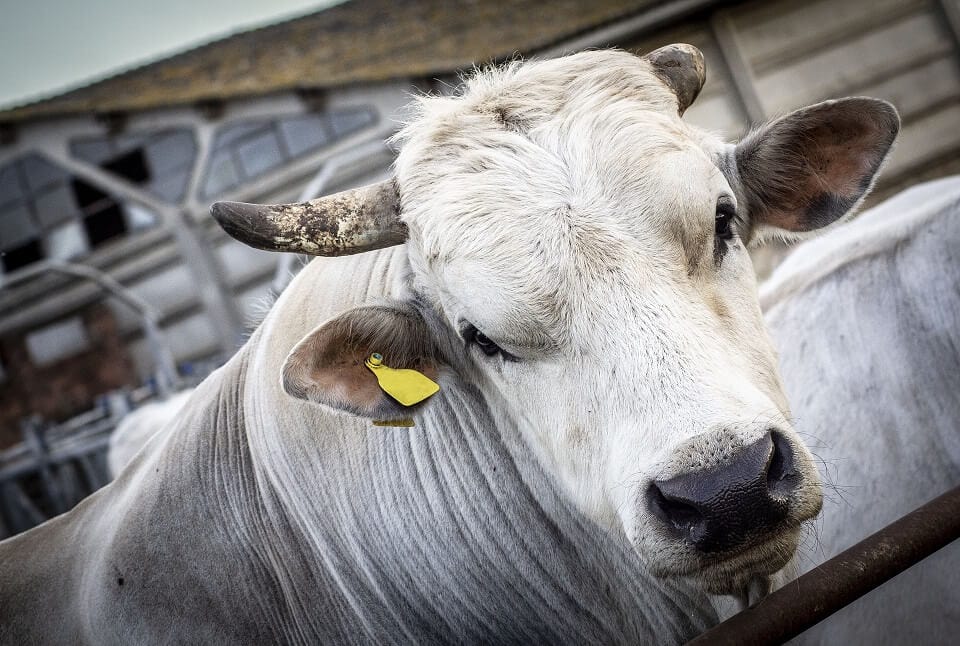
The Chianina cattle is part of the largest cattle breed in the world and is used as beef cattle. It originates from Italy and is now also used worldwide as a crossbreeding partner, among other things due to its suitability for the tropics. Furthermore, they are characterised by their easy calving and their large frame. Properties that they bring with them at crossings.
The “white giants” can be recognised by their porcelain white fur. The calves are born with red fur, which changes over time.
| Profile Dexter Beef: | |
| height at withers: | 96 – 111cm |
| milk yield: | 2.000 – 3.000 kg 4.3% fat |
| first calving age: | 24 – 27 months |
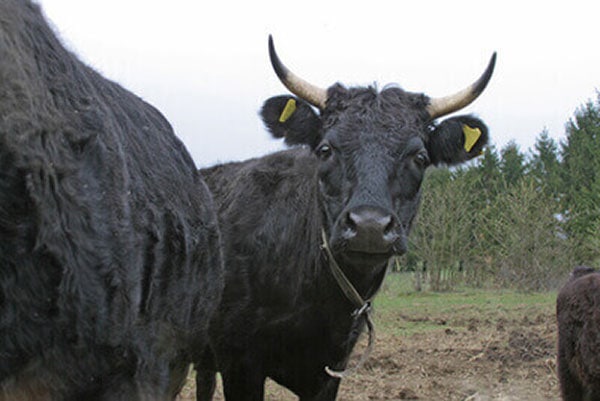
The Dexter cattle only became so small through crossbreeding. They originally came from England and were used as family cattle. This means that the milk and meat was just enough for the family and sometimes even for friends and acquaintances. Today this breed is used in the niche market and is preserved in this way.
Worth knowing!
The breed was threatened with extinction and could only survive with financial support from the EU.
| Profile Scottish Highland Beef: | |
| weight: | 400 – 750 kg |
| height at withers: | 1.10 – 1.35 m |
| first calving age: | 40 months |
| fattening: | well suited |
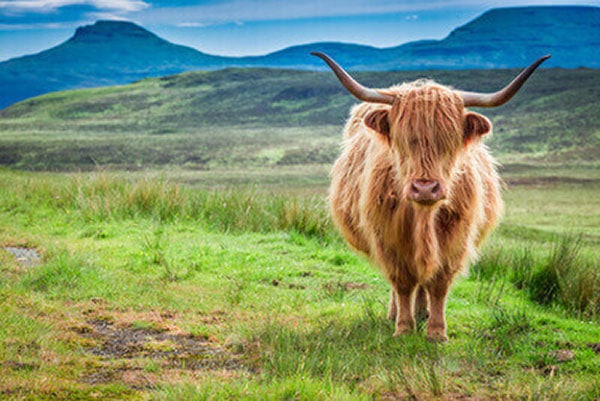
The Scottish Highland Beef is a very calm and trusting breed of cattle that builds a special relationship with its owners. They have long coats and are thus protected against rain, cold and also heat. The calves of the highland cattle can be born on the pasture even at temperatures as low as -20 degrees Celcius and up to old age. The horns of the Highlanders can reach a span of 1.40 m. The animals come in different colours, but the red colour is most common.
Worth knowing!
The bulls of the highland cattle are only suitable for grazing. They are mostly used for landscape management, because the meat yield is too low.
| Profile Dwarf Zebu: | |
| weight: | 200 – 400 kg |
| height at withers: | 0.90 – 1.25 m |
| first calving age: | 28 months |
| fattening: | low gains |

Zebus are also known as humpback cattle. The hump is located at the withers and is more pronounced in males than in females. It consists of muscle flesh and contains more or less fat deposits depending on the nutrient supply. Zebus occur in a wide variety of colours.
The breed is often used for landscape maintenance as it is extremely easy to maintain and undemanding. In addition, the animals are very willing to climb and are safe on slopes and can therefore also be used on steep slopes or areas with a lot of scrub. A further advantage is the low impact on the turf due to kick damage.
Furthermore, the females are characterised by their good maternal qualities and easy calving. An intensive herding behaviour can also be observed in the animals.
Worth knowing!
Zebus have low feeding requirements and also eat excess grass, thistles and blackthorn.
Now for all breeds: DairySafe!
– So that the liver does not become fat and lethargic
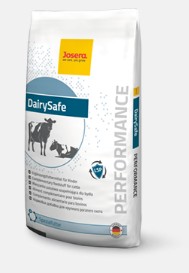
You might be interested in the following contents:
The correct use of mineral feed
The necessary quantity of mineral feed is frequently discussed. It is often not clear why and how these quantities come about. This article will explain the general use of mineral feeds. It is intended to help you with correct application.
The path to optimal grass silage
The forage is the most important component in the feeding of dairy cattle. Combined with high proportionate costs in BZA (agricultural industry full-cost accounting) in the area of dairy cattle, it is very important to ensure that high-quality forage is harvested.
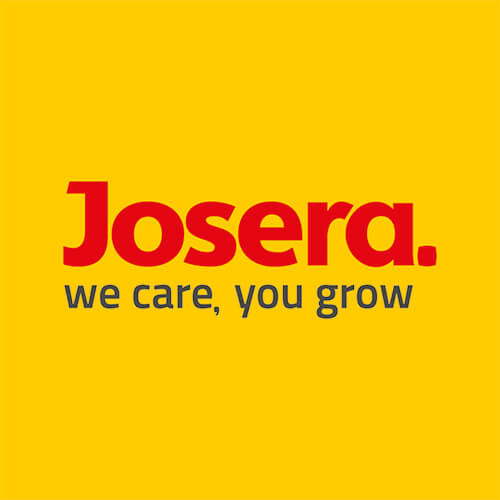
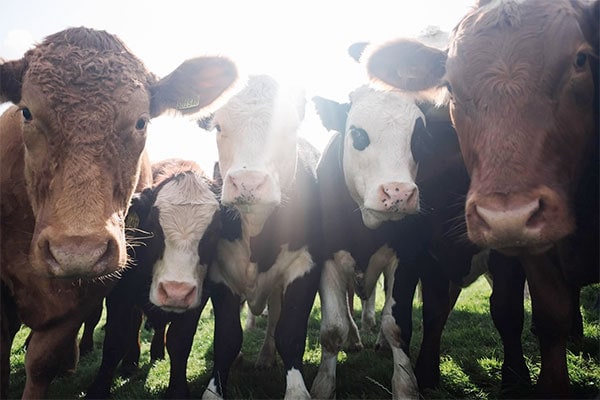




 (1 Votes, average: 5.00 von 5)
(1 Votes, average: 5.00 von 5)
